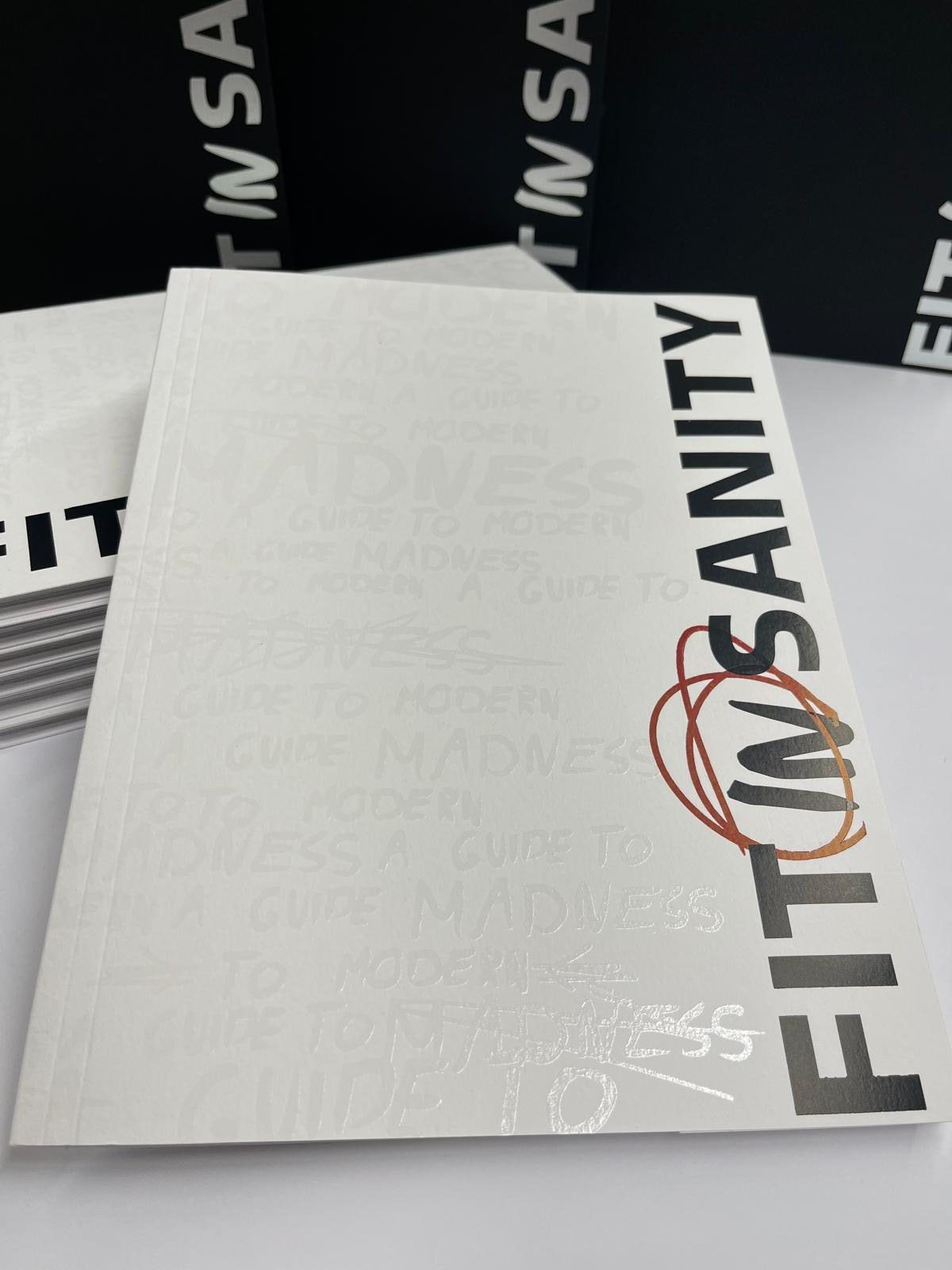
FitInSanity - a modern photobook inspired by American Psycho
In an impressive display of innovation and collaboration, students from Print Media Technologies and Packaging Technologies, Werbung und Marktkommunikation, Medienwirtschaft, Informationsdesign, Wirtschaftsingenieurwesen Medien and exchange students at Hochschule der Medien (HdM) in Stuttgart and have brought to life “FitInSanity”, a modern photobook inspired by by Bret Easton Ellis’ controversial novel, American Psycho. The project, part of the ‘Campaign Management’ course led by Professor Dr. Volker Jansen and Prof. Dr. Lindenmann serves as a testament to the integration of creative processes with cutting-edge technology.
The Project Overview
FitInsanity: A Satirical Photobook Inspired by American Psycho
FitInsanity is a bold, satirical photobook that reimagines Bret Easton Ellis’ American Psycho through the lens of modern self-help culture. Blending dark humor with sharp social commentary, the book parodies society’s obsession with perfection, productivity, and physical appearance—turning the unsettling world of Patrick Bateman into a twisted guide for “self-improvement.”
Presented as a self-help book, FitInSanity mimics the tone of motivational manuals, offering exaggerated “tips” on fitness, lifestyle, and success. Its striking visual storytelling combines meticulously staged photography, minimalist layouts, and bold typography to create an aesthetic as sleek and hollow as the culture it critiques.
Through its satirical approach, FitInSanity holds up a mirror to the absurdity of extreme self-optimization, questioning the fine line between ambition and obsession. It’s not just a photobook—it’s a darkly comic reflection on the madness hidden beneath the surface of modern life.
The Creative Process
The project began with conceptualization and visual storytelling, translating the novel’s dark, satirical tone into compelling imagery through original photography and carefully crafted graphic design layouts. The mood and aesthetic were meticulously chosen to reflect the novel’s chilling atmosphere, with stark contrasts, minimalist typography, using the hand-written scribbles and a sharp focus on psychological tension. The students were divided into the groups (Layout, Photoshooting, Post Production, Print, Website, Media Night and Social Media) each responsible for the specific task.
Production Techniques
The project didn’t stop at the creative phase. Students also took full responsibility for the technical aspects of print production, showcasing their comprehensive understanding of the entire workflow from concept to final product. This process began with an intensive photoshooting phase, where students meticulously planned and executed each shot to align with the book’s satirical and dark aesthetic. They managed all aspects of the shoot, including set design, lighting setups, model direction, and composition techniques, ensuring that every image captured the unsettling, stylized tone inspired by American Psycho.
Following the shoot, the focus shifted to post-production, where students applied advanced photo editing and retouching techniques to enhance the visual narrative. This involved color grading to create atmospheric consistency, contrast adjustments, image manipulation, and detailed retouching to emphasize the book’s sharp, polished look while maintaining its edgy, satirical undertone. The post-production phase was crucial in transforming raw images into powerful visual statements that complemented the book’s theme.
With the creative visuals complete, students moved into prepress preparation, ensuring all design files were optimized for print. This included tasks like image resolution adjustments, color profile embedding, layout refinements, and preparing print-ready PDFs.
The project culminated in the physical printing process, where students operated professional-grade equipment, carefully selecting paper stocks, ink types, and finishing techniques. They explored various binding methods—from perfect binding to more experimental approaches—to enhance the book’s tactile and visual appeal. Special attention was given to coating options and embossing to add texture and depth to the final product.
The result was a professionally bound book that seamlessly integrated creative design, technical precision, and production expertise. This project not only highlighted the students’ artistic capabilities but also demonstrated their mastery of the entire print production process—from initial concept and photography to post-production, prepress, and final print execution.
Beyond the printed book, students also extended their efforts into the digital realm, creating and managing content for social media platforms such as Instagram, TikTok, and LinkedIn. These platforms were used to promote the project, engage with audiences, and showcase the creative process through behind-the-scenes content, teasers, and interactive posts. Their strategic approach to social media not only enhanced the book’s visibility but also demonstrated their ability to adapt marketing techniques to different digital environments.
Additionally, students developed a dedicated website to serve as a digital hub for the project. The website featured detailed information about the book, an online gallery showcasing key visuals, and insights into the production process. It provided an interactive space for audiences to explore the project beyond the physical book, highlighting the students’ skills in web design, content management, and digital storytelling.
Team Effort and Guidance
The project saw contributions from a large team of students from different programmes. Each member brought their unique skills and perspectives to the table, enriching the project with a variety of ideas and approaches.
The project was generously supported by Sebastian Paul, Matthias Galus, Antonia Gotz, Bernard Michl, and Heiko Gatawis, whose expertise and guidance were invaluable in navigating the complexities of the production process. Their contributions provided students with essential resources, technical insights, and professional mentorship, playing a crucial role in the successful completion of the project.
